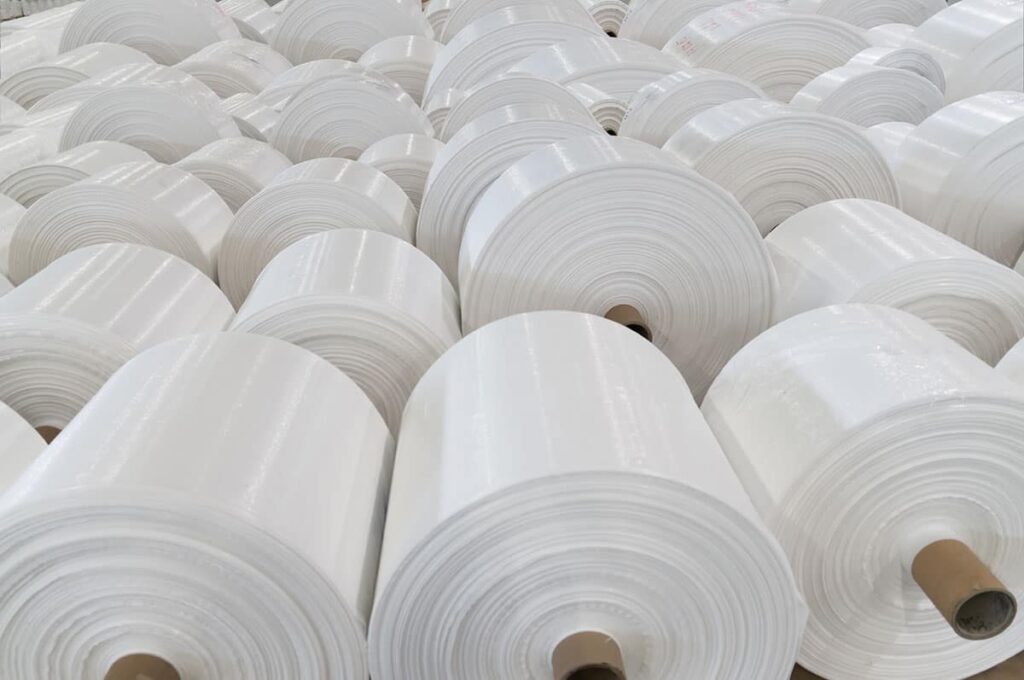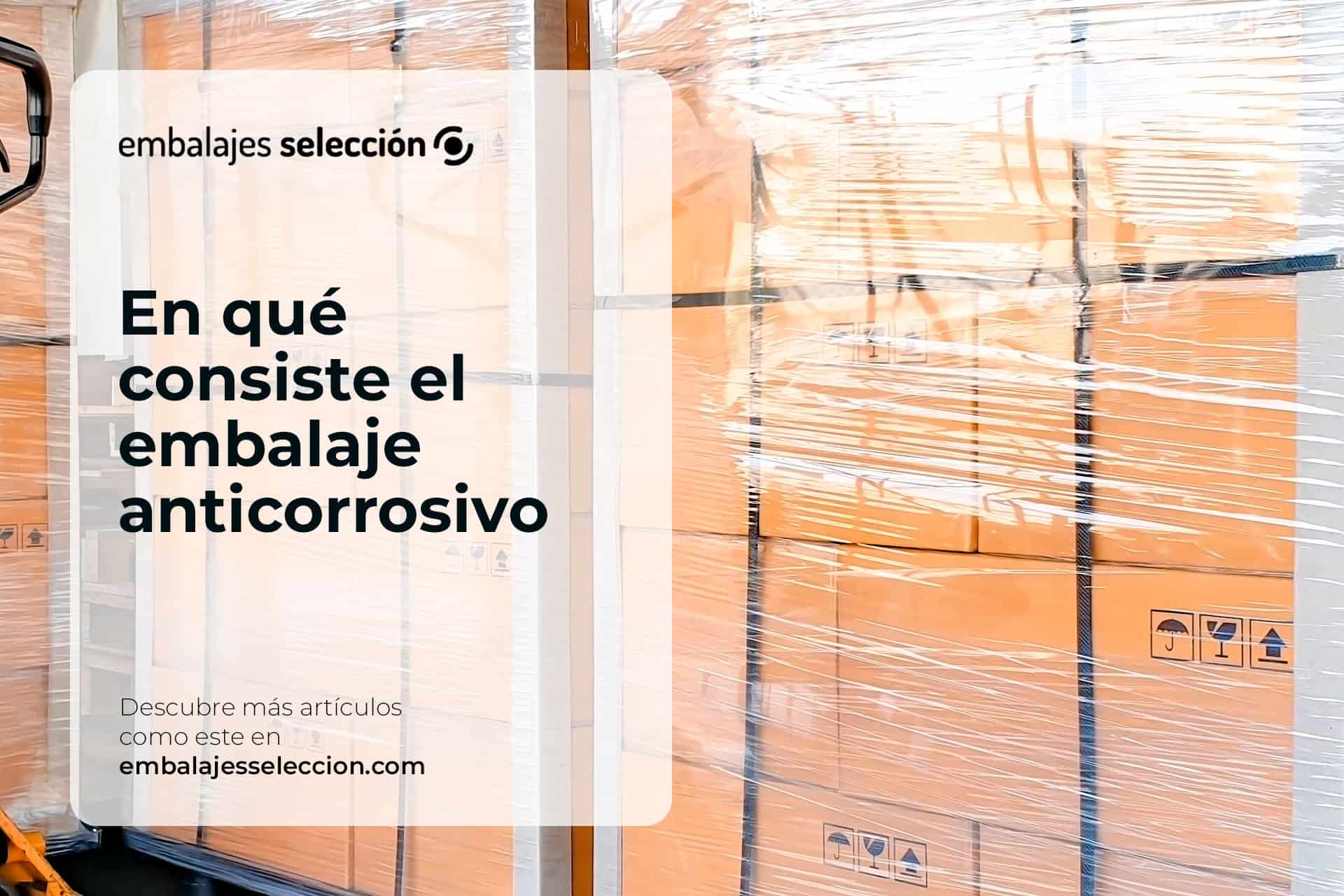One of the basic functions of packaging is to protect the item inside. Delicate objects must be packed with protective measures so that in case of impact they are not broken or damaged. But what about those that are made of metal? In these cases, breakage is more unusual, since their hardness prevents it, but there is a special risk in this type of object: corrosion. And in these cases, anti-corrosive packaging is absolutely necessary for its protection, so it must be taken into account if we want to pack any metal object so that it arrives in good condition at its destination. Let’s see what they consist of and what types there are.
Why use corrosion-resistant packaging
Corrosion occurs when a metal interacts with the environment and combines with elements such as water and oxygen. Rust is its most common form and is produced when a metallic element is continuously exposed to moisture. In other cases, it can also appear due to the presence of salts in the metal structure.
Once the corrosion has appeared, it damages the metal components of an objectIt is therefore strictly necessary to protect it if we want to preserve it and avoid any damage it may suffer, especially if it is sent by sea transport, since the salinity of the water and the air, which is full of salts, are highly corrosive elements. In another article of our blog we can see how the protection of packaging in maritime transport should be.
Although it is true that there are several methods by which we can avoid this corrosion in part shipments, such as the use of paints or greasing the objects with grease or oil, these are not always conveniently ideal, as they can be costly due to the time involved in their execution and the great cleaning efforts they require afterwards. Therefore, one of the most feasible and optimal solutions is to use corrosion-resistant packaging.
Anti-corrosion packaging and its types
We have already seen that anti-corrosion packaging is designed to protect a metal from rust and to save on labor in shipping metal objects. But is it only useful for ocean shipments?
In fact, there are numerous sectors where they make use of this form of packagingThe stocking of parts before painting, the delivery of spare parts in individual packaging or to prevent oxidation of parts during transport or in a distributor’s warehouse are just some of the most tangible examples of this.
For this purpose, various types of anti-corrosion packaging can be found on the market, most of which contain a compound called VCI. This is a material that is added to the packaging and covers the material with a thin layer of protection in case of contact with air.
The protective layer produced by the VCI prevents moisture from interacting with the metal of the packaged object and thus eliminates possible corrosion. In reality, in an anticorrosive packaging, the format and materials can be very varied, but in most cases with the incorporation of the VCI inside. Accordingly, we can highlight 4 major classifications, which are described below.
-
VCI stretch film
VCI stretch film is made of an environmentally friendly material as no oil or grease is used to prevent corrosion. All the elements with which it is made are organic and the polyethylene it contains is fully recyclable.
-
VCI sheets, bags and tubes
This type of bags are perfect for packaging and to easily protect the objects they contain. Within the category of this anticorrosive packaging are:
- VCI reinforced sheets: Designed for heavy parts or steel coils.
- Anticorrosive PE VCI sheets: Valid for all sizes of parts and very suitable for maritime shipments and storage.
- VCI anti-corrosion bags: Intended for corrosion protection of ferrous and non-ferrous parts in the form of sleeves and pallet covers to cover cardboard, wood or plastic boxes.
- VCI anti-corrosive zip lock bags: Safe and easy to open thanks to their minigrip closure, they protect parts of different sizes from corrosion.
- VCI anti-corrosion tubing: LDPE tubing reels for easy wrapping of products.
- Anticorrosive VCI shrink film: These are shrink films from 100 to 300 microns, very suitable for the protection of machines and engines or all types of parts already assembled.
-

-
VCI anticorrosion paper
Within this category we can find:
- VCI raffia paper: Designed for the protection of large parts.
- Anticorrosive VCI Kraft paper: Supplied in single sheets or in reels of various sizes. It is used for long-term storage of all types of parts.
- VCI paper + raffia compounds: Specially designed for the protection of parts exposed to aggressive atmospheres.
-
Other types of corrosion-resistant packaging
Finally, there are other types of anticorrosive packaging such as:
- VCI emitters: They work separately and together with other protections, and are available in numerous formats and degrees of protection.
- VCI anti-corrosion bubble: Protection made with bubble envelopes.
- PE plastic film: Made with VCI treatment and high-tech resins. It is available in numerous formats such as sheets, sacks, coils or bags. Suitable for corrosion protection of all types of parts in storage and shipping processes.
- Anticorrosive PE wire: Designed for interior protection of pipes, ducts and fittings.
- Cardboard boxes: Contain VCI additives applied and are hermetically sealed.
- Anti-humidity desiccants: These are clay, silica and calcium chloride desiccants that solve humidity problems in the storage and transport of parts.
Anti-corrosion packaging is an excellent solution that avoids the need to use grease and oil to prevent rusting of all types of metal parts. It is a convenient, time-saving and cost-effective solution for metal protection in shipping and warehousing. Contact us for more information.

